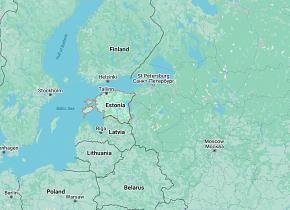Climate Change control possible says Concordia Professor
(Concordia.ca) -- With levels of greenhouse gases in the atmosphere going nowhere but up and global temperatures quickly following suit, is there any hope of preventing global warming from reaching dangerous levels? It is possible to keep global warming in check by putting a stop to the emission of greenhouse gases, according to Damon Matthews, associate professor with Concordia’s Department of Geography, Planning and Environment.
In a paper published online in Nature and co-authored by Kirsten Zickfeld of Simon Fraser University, Matthews writes that that climate change is a current reality rather than a future possibility. Harmful emissions of greenhouse gases have already resulted in a global temperature rise of almost one degree, and even if we were to stop emitting altogether, temperatures would continue to increase by about another quarter of a degree.
In Canada, temperatures are rising quickly because continents warm faster than oceans and melting snow amplifies warming since it exposes darker ground that absorbs more heat. “This means that emissions have already committed Canadians to more than two degrees of warming. At current emissions rates, we’re well on our way to seeing a temperature increase of two degrees globally, which will mean closer to four degrees in Canada,†Matthews says.
The only way to stop global warming is to stop emissions of greenhouse gasses. “If we stop emitting now, the temperature in 2200 would be similar to today’s,†explains Matthews. But even if we manage that miracle, he cautions, “a few tenths of a degree of short-term warming is unavoidable.â€
Why this additional warming? Matthews’ research shows that when aerosol and other greenhouse gas emissions are eliminated, aerosols are the first to be removed from the atmosphere. This results in a rapid removal of the cooling influence of these reflective particles, and as a result, global temperature increases by a few tenths of a degree over about a decade. Subsequently, greenhouse gases with short atmospheric lifetimes, such as methane, start to decrease in the atmosphere, and temperatures cool gradually back to present-day levels after about a century.
These differences in climate response to long- and short-lived greenhouse gas and aerosol emissions have important implications for efforts to prevent dangerous climate change. By decreasing emissions of both short-lived gases and aerosols, we can manage short-term temperature change. Decreasing emissions of long-lived greenhouse gases that include carbon dioxide is critical to meeting long-term temperature-reduction targets.
"A global temperature increase of no more than two degrees is not an impossible target to aim for,†says Matthews. Global temperatures will never return to what they were prior to the industrial revolution but the two degree increase is within our grasp — for now.
Partners in research: Support for this research was granted by the Natural Sciences and Engineering Research Council of Canada.
Comments
There are 0 comments on this post














